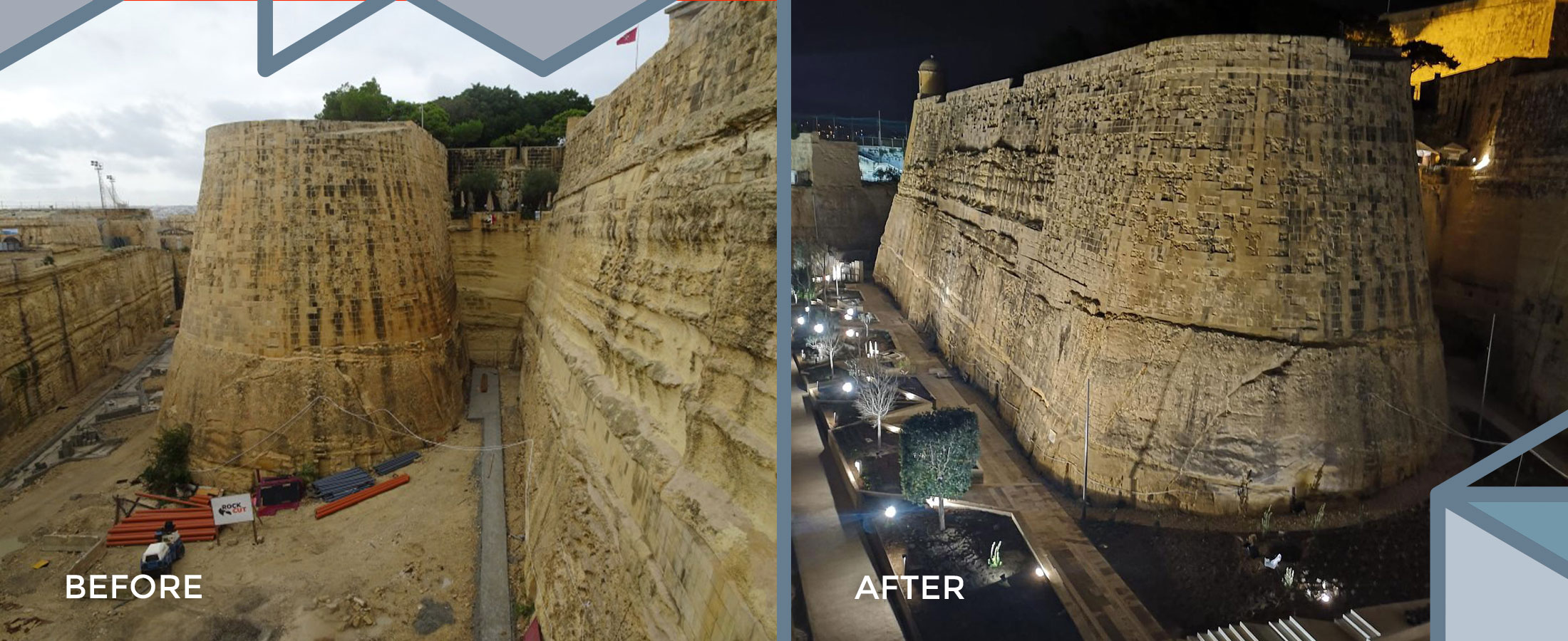Project Description
Francesco Laparelli’s original design of Valletta consisted of a bastioned land front with two cavaliers separated from the mainland by a deep ditch. Although varying in time, the ditch approximately measures 12.5 meters in depth and from 12.5 meters to 25 meters wide in certain locations and cuts across from Marsamxett Harbour to Grand Harbour. The ditch served as a final deterrent to stop any invading enemy from directly reaching the city’s walls but was never tested in battle.
From 1883 to 1931 The Malta Railway was the only railway line ever on the island and it consisted of a single railway line from Valletta to Mdina. The ditch was spanned with a bridge at a lower level to connect the railway tunnel running under Floriana and ending at the underground station in Valletta beneath Kingsway.
During the Second World War, various galleries and rooms were excavated in the live rock to create shelters and spaced where many residents from Valletta took refuge during the relentless air-raids by the axis powers. In time, most of the entire length of the ditch served as a car park, including a ramp leading to the old railway tunnel which also served the same purpose.
The upgrading of the ditch was also included as part of the Project for City Gate and was planned to serve as part car-park and part a garden which did not materialise according to the original plans. Instead, the stretch of the ditch from the spur of St John’s Bastion to the spur of St James’ Bastion was chosen for the new garden.
In 2017 under the management of the Grand Harbour Regeneration Corporation (GHRC), the ditch was redesigned with access through a stairway within the walls and an exterior, panoramic elevator to provide the experience of the depth of the ditch and leads to the garden below. Other than the garden’s atmosphere, the ditch provides for relaxing activities and the dramatic scenery for spectacular outdoor events and performances.
Named Ġnien Laparelli (Laparelli Garden) as a tribute Italian architect Francesco Laparelli, who was commissioned by Pope Pius V to design Valletta following the Great Siege of 1565. The design of the ditch respects the fortifications sequences is divided into various zones that create a balance between green and open spaces where the public may appreciate the fortifications both from the ditch and also from Tritons square and from Valletta’s entrance. Other to its unique design, the ditch contains around 2,500m2 of paved ground, 47 indigenous trees, 4,400 indigenous shrubs and recreation facilities. Its total cost was €4.5M.







